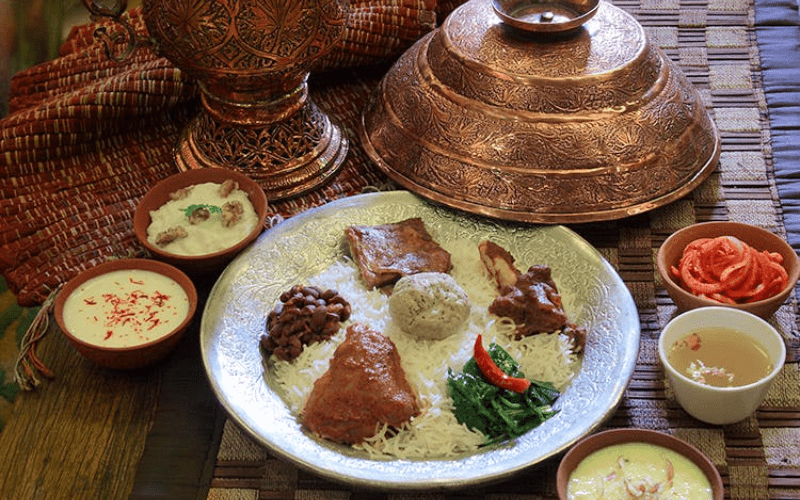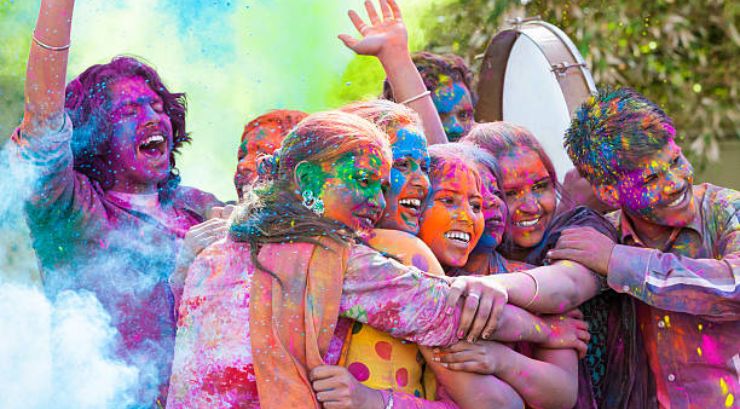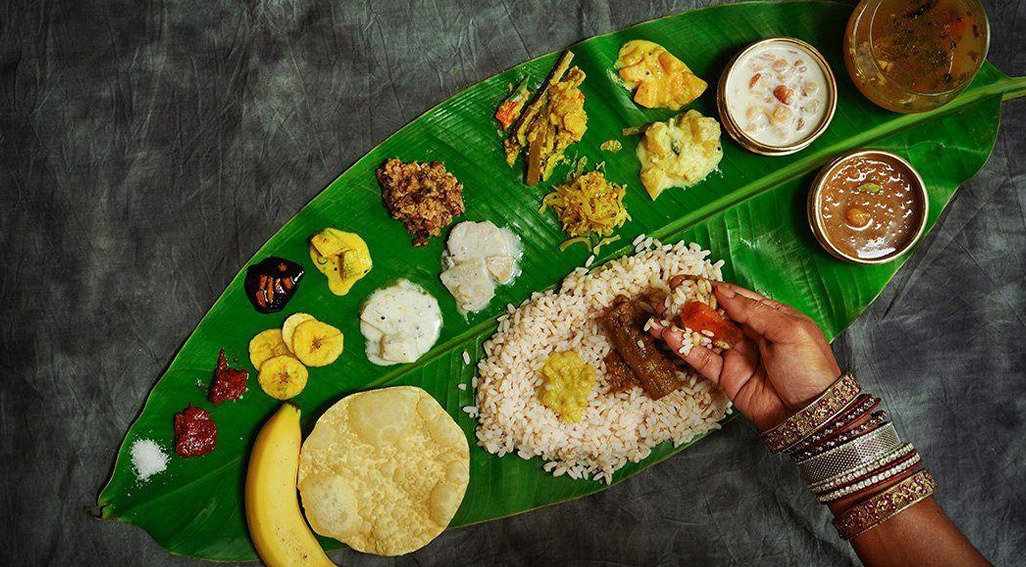Welcome to our savory sanctuary, where we invite you to indulge in culinary journeys through India— a land where every dish tells a story, and every meal is an experience. Thank you for subscribing to our newsletter and letting us share our love of India, food and travel with you.
The Tulip festival in Kashmir is the biggest of its kind in Asia. With over 1.5 million tulips and more than 46 varieties blooming over 30 acres, this tulip garden is a paradise for nature enthusiasts and photographers. For many Indians who could only admire the famous landscapes of Holland in pictures and movies are now able to experience this beautiful bloom fest at home. Most people who visit say that it is one of the most awesome sights they have experienced in their lives.
Talking of awesome things, we are thrilled to unveil our first 2026 hosted journey to India in March – timed to celebrate Holi, the festival of colours. Visiting India during such a vibrant festival is by itself an incredible experience, but what makes this tour even more special is that it is hosted by Sid and Chand. Over 12 days we cover the best of North, East, West and South – private Holi celebration in Delhi, 10-course fine dining paired with single malt whiskey experience in Kolkata, a masterclass of Mumbai street food in the No. 1 restaurant in India and standing at the Southernmost tip of the country where the three seas meet – these are only some of the experiences we have curated.
Like all our hosted journeys, this is a small-group tour with limited seats. After the rave reviews from Sid and Chand’s previous journeys with us, this exclusive tour hosted by both of them is expected to sell out quickly. If you’ve ever dreamed of experiencing India’s festivals, hospitality, luxury, and extraordinary cuisine, this is your moment. Secure your spot for March 2026 – full itinerary is linked below, and you can reserve your place simply by replying to this email.
DESTINATION OF THE MONTH
KASHMIR

You’ve probably felt the feather-light warmth of a real Cashmere shawl. But did you know its story begins in the valleys of Kashmir? For centuries, Kashmir has been the birthplace of the world’s most luxurious wool, hand-spun and woven by artisans whose skills have been passed down through generations. A single shawl can take months to make, and once you’ve wrapped one around your shoulders, you will understand why it’s loved by royalty and style icons alike. The names Cashmere and Kashmir are not a mere coincidence.
Kashmir is a place of staggering natural beauty and calm. Imagine waking up on a wooden houseboat on Dal Lake, morning mist over the water, as shikaras glide by selling fresh flowers. Or walking through tulip gardens in spring, with snow-capped mountains as the backdrop. In New Zealand, we are spoiled with stunning natural beauty, but Kashmir also feels like a postcard.
Kashmiri food is unforgettable. The traditional Wazwan, a multi-course Kashmiri feast, is like a celebration. When we are in Delhi, one of our favourite places to enjoy the Wazwan is at “Chor Bizarre”. The food is extraordinary, and the interiors of this restaurant are inspired by India’s richness, playfulness, and love for life. Everything from the furniture and fabrics to the cutlery and decor in this restaurant tells a story. Think antique tables, colourful street food carts, old coal irons, vintage clocks, and even century-old Singer sewing machines, all come together in a joyful, quirky mix. They proudly say that “In our restaurant, nothing matches yet everything gels”.
We spoke to the executive chef of Chor Bizarre. He has a special love for Good Food Journeys and keenly awaits welcoming our groups whenever we are in Delhi.
CHEF INTERVIEW
Renowned for its picturesque and breathtaking landscapes, Kashmir also boasts a culinary heritage that remains surprisingly underrated. Few places offer a true taste of this cuisine, but Delhi’s Chor Bizarre lets us experience a range of Kashmiri delights and the authentic Wazwan.
Chef Srinivas is at the helm of Chor Bizarre and has been here since 2007. When we dined here earlier this year, he showed us around and told stories about some of the antiques on display. The one that stood out most was the 1927 Vintage car, which houses one of their buffets.
1. What first inspired you to become a chef, and how did your journey bring you to Chor Bizarre?
The decision for me to become a chef is sparked by patience, creativity, dedication and love for the food. My journey to Chor Bizarre is because of the Kashmiri food. There are a lot of techniques that are used in the Kashmiri cuisine which inspired me a lot. During my college days, I was looking for an opportunity to get into Kashmiri cuisine and that’s how I ended up here at Chor Bizarre. It is the first restaurant to bring Kashmiri food out of the valley and serves one of the best Kashmiri food. I have been associated with Chor Bizarre since 2007. I could say like I grew up in this place.
2. Could you walk us through how the Wazwan is curated—both the ingredients and the rituals involved?
The Kashmiri food wazwan is served during feasts, like weddings. Technically it has 36 dishes. It is a big plate called Tarami and four people sit in four corners of the plate.
The main ingredient used in Kashmiri Cuisine is the fennel. Fennel and the dry ginger powder play a very important role. There are two kinds of Kashmiri Cuisine; one is called ‘Batwaza’, which belongs to the Pandits, and another cuisine is called the ‘Wazas’, which belongs to the Muslim community. So there is a lot of difference between the food that they cook. Like the Kashmiri Pandit consume only fish and lamb. They don’t eat chicken. And even though they have non vegetarian food, onion and garlic are still not allowed. But that is not the case with Kashmiri Muslims. So, as chefs, we also have to cater to these rules to keep the authenticity alive.
In Chor Bizarre, we serve the best of the Kashmiri cuisine as Wazwan is an experience, not just food.
3. How do you balance authenticity with the preferences of international guests who may be trying Kashmiri cuisine for the first time?
We take the authenticity of the dishes very seriously. We get many international guests in our restaurant and let’s be real; Kashmir food is spicy. But there are few dishes which are not so spicy, like mutton yakni. So if the guest prefers having food low on spice, we offer them dishes which suit their palate. Instead of saying that we’ll make the same dish, like Mutton Rogan Gosh, with less spice I prefer choosing the correct dishes, instead of changing the authenticity of the dish. That is how we do justice to the food and the Kashmiri cuisine.
4. What is your earliest memory of cooking?
My earliest memory of cooking was with my grandmother. It was when I was in grade 6. I asked my grandmother to prepare something for me to eat and she asked me to help her out in the kitchen. Then, quickly, she did this upma made up of a few mashed Idli.
5. What is your favourite dish on your restaurant menu?
My favorite dish is Aloo Bukhara Korma and Tanakmas. Aloo Bukhara Korma is dish is the perfect balance of spicy, tangy and sweet and is eaten with warm rice. Tanakmas is basically lamb ribs. And in the vegetarian, my favourite dish is the Kashmiri Dum Aloo. It’s a famous dish of the Kashmiri Pandits. So there is no use of onion, garlic, or tomato in the dish.
6. Who is your culinary hero?
Chef Marco Pierre White. He has been teaching people how to be in a kitchen, what to do in a kitchen, how to grow in a kitchen.
7. What is your favourite holiday destination in the world?
I would like to travel to Dubai. or Bali. In India, it’s Srinagar.
8. What’s a current food trend that you are excited about?
Plant based. People are getting more and more cautious about their health. And you get to be creative with it.
9. What’s the most unusual food combination you secretly enjoy?
So in Andhra Pradesh, we have fish curry and curd rice. So I like to add two spoons of fish curry gravy with my curd rice. It tastes really, very good. The tanginess and spiciness of the fish curry adds a good taste to the curd rice. I also love vanilla ice cream with a small dash of honey and two drops of lemon juice.
9. What is the story behind the famous car inside the restaurant?
This restaurant was started in 1990. And this is India’s first theme based restaurant. Our restaurant is full of antiques like transistors, old sewing machines, etc. The car is also one of those special antiques. It was actually driven into the restaurant by Mr. Rohit Khattar. It is a vintage 1927 Fiat car, which houses our chaat buffet, and adds a grand finishing touch to the interiors.
KASHMIRI CUISINE
Kashmiri cuisine is known for its generous use of spices such as saffron, fennel, cardamom, and dry ginger, which lend depth and complexity to its dishes. All these spices are grown in Kashmir and therefore available in abundance. The cuisine is predominantly meat-based, with lamb being a staple ingredient, although vegetarian options are also available. Rogan Josh which is available in almost all Indian restaurants and takeaways in NZ is a signature Kashmiri dish.
The Wazwan is a grand multi-course feast, and a must-have culinary experience in Kashmir. Prepared by master chefs of the region known as wazas, Wazwan is an elaborate feast that consists of multiple courses, often served at weddings and special occasions. The meal is traditionally eaten in a communal setting, where guests sit together and share from a large copper platter. A traditional Wazwan consists of 30 to 36 dishes. And every dish is an intricate process that requires expertise, patience, and an understanding of the balance of flavors as per the tradition.

We look forward to treating you to a Wazwan experience at Chor Bizarre in Delhi.
SAFFRON
Golden, fragrant, and worth more than its weight in gold, Saffron is one of Kashmir’s most treasured gifts. Grown just outside Srinagar, Kashmiri saffron is prized worldwide for its deep red threads, intense aroma, and rich flavour. You will find it in most Indian homes, and is used in biryani, desserts, and wellness rituals. Harvested by hand in autumn, the delicate flowers bloom for only a few weeks, making this spice as rare as it is luxurious. How much does it cost you ask? About NZ$50,000 per kg!
Saffron holds a deep and sacred place in Indian tradition, far beyond its role in the kitchen. Known as ‘‘Kesar’’ in Hindi, it has been cherished for centuries in spiritual rituals and festive celebrations.
In Hinduism, saffron symbolizes purity, light, and sacrifice. It’s often used to mark the forehead during prayers and religious ceremonies, signifying devotion and spiritual awakening. Saffron-colored robes are worn by sages and monks as a sign of renunciation and wisdom.









